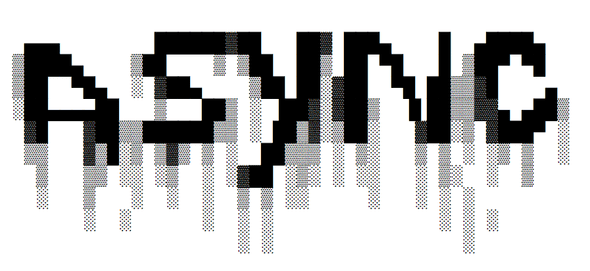Overview
Node.js is a runtime environment for JavaScript that runs on the server.
Node.js is open source, cross-platform, and since its introduction in 2009, it got hugely popular and now plays a significant role in the web development scene. If GitHub stars are one popularity indication factor, having 46000+ stars means being very popular.
Node.js is built on top of the Google Chrome V8 JavaScript engine, and it's mainly used to create web servers - but it's not limited to that.
The best features of Node.js
Fast
One of the main selling points of Node.js is speed. JavaScript code running on Node.js (depending on the benchmark) can be twice as fast than compiled languages like C or Java, and orders of magnitude faster than interpreted languages like Python or Ruby, because of its non-blocking paradigm.
Simple
Node.js is simple. Extremely simple, actually.
JavaScript
Node.js runs JavaScript code. This means that millions of frontend developers that already use JavaScript in the browser are able to run the server-side code and frontend-side code using the same programming language without the need to learn a completely different tool.
The paradigms are all the same, and in Node.js the new ECMAScript standards can be used first, as you don't have to wait for all your users to update their browsers - you decide which ECMAScript version to use by changing the Node.js version.
V8
Running on the Google V8 JavaScript engine, which is Open Source, Node.js is able to leverage the work of thousands of engineers that made (and will continue to make) the Chrome JavaScript runtime blazing fast.
Asynchronous platform
In traditional programming languages (C, Java, Python, PHP) all instructions are blocking by default unless you explicitly "opt in" to perform asynchronous operations. If you perform a network request to read some JSON, the execution of that particular thread is blocked until the response is ready.
JavaScript allows to create asynchronous and non-blocking code in a very simple way, by using a single thread, callback functions and event-driven programming. Every time an expensive operation occurs, we pass a callback function that will be called once we can continue with the processing. We're not waiting for that to finish before going on with the rest of the program.
Such mechanism derives from the browser. We can't wait until something loads from an AJAX request before being able to intercept click events on the page. It all must happen in real time to provide a good experience to the user.
If you've created an onclick handler for a web page you've already used asynchronous programming techniques with event listeners.
This allows Node.js to handle thousands of concurrent connections with a single server without introducing the burden of managing threads concurrency, which would be a major source of bugs.
Node provides non-blocking I/O primitives, and generally, libraries in Node.js are written using non-blocking paradigms, making a blocking behavior an exception rather than the normal.
When Node.js needs to perform an I/O operation, like reading from the network, access a database or the filesystem, instead of blocking the thread Node.js will simply resume the operations when the response comes back, instead of wasting CPU cycles waiting.
A huge number of libraries
npm with its simple structure helped the ecosystem of node.js proliferate and now the npm registry hosts almost 500.000 open source packages you can freely use.
An example Node.js application
The most common example Hello World of Node.js is a web server:
const http = require('http')
const hostname = '127.0.0.1'
const port = 3000
const server = http.createServer((req, res) => {
res.statusCode = 200
res.setHeader('Content-Type', 'text/plain')
res.end('Hello World\n')
})
server.listen(port, hostname, () => {
console.log(`Server running at http://${hostname}:${port}/`)
})To run this snippet, save it as a server.js file and run node server.js in your terminal.
This code first includes the Node.js http module.
Node.js has an amazing standard library, including a first-class support for networking.
The createServer() method of http creates a new HTTP server and returns it.
The server is set to listen on the specified port and hostname. When the server is ready, the callback function is called, in this case informing us that the server is running.
Whenever a new request is received, the request event is called, providing two objects: a request (an http.IncomingMessage object) and a response (an http.ServerResponse object).
Those 2 objects are essential to handle the HTTP call.
The first provides the request details. In this simple example, this is not used, but you could access the request headers and request data.
The second is used to return data to the caller.
In this case with
res.statusCode = 200we set the statusCode property to 200, to indicate a successful response.
We set the Content-Type header:
res.setHeader('Content-Type', 'text/plain')and we end close the response, adding the content as an argument to end():
res.end('Hello World\n')Node.js frameworks and tools
Node.js is a low-level platform, and to make things easier and more interesting for developers thousands of libraries were built upon Node.js.
Many of those established over time as popular options. Here is a non-comprehensive list of the ones worth learning:
- Express, one of the most simple yet powerful ways to create a web server. Its minimalist approach, unopinionated, focused on the core features of a server, is key to its success.
- Meteor, an incredibly powerful full-stack framework, powering you with an isomorphic approach to building apps with JavaScript, sharing code on the client and the server. Once an off-the-shelf tool that provided everything, now integrates with frontend libs React, Vue and Angular. Can be used to create mobile apps as well.
- koa, built by the same team behind Express, aims to be even simpler and smaller, building on top of years of knowledge. The new project born out of the need to create incompatible changes without disrupting the existing community.
- Next.js, a framework to render server-side rendered React applications.
- Micro, a very lightweight server to create asynchronous HTTP microservices.
- Socket.io, a real-time communication engine to build network applications.

